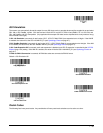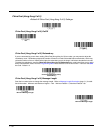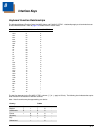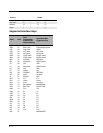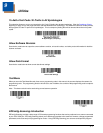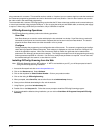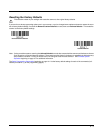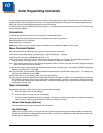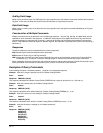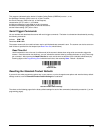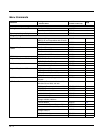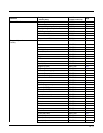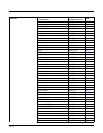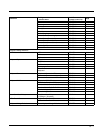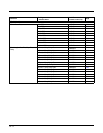
10 - 1
10
Serial Programming Commands
The serial programming commands can be used in place of the programming bar codes. Both the serial commands and the
programming bar codes will program the scanner. For complete descriptions and examples of each serial programming com-
mand, refer to the corresponding programming bar code in this manual.
The device must be set to an RS232 interface (see page 2-1). The following commands can be sent via a PC COM port using
terminal emulation software.
Conventions
The following conventions are used for menu and query command descriptions:
parameterA label representing the actual value you should send as part of a command.
[option]An optional part of a command.
{Data}Alternatives in a command.
boldNames of menus, menu commands, buttons, dialog boxes, and windows that appear on the screen.
Menu Command Syntax
Menu commands have the following syntax (spaces have been used for clarity only):
Prefix [:Name:] Tag SubTag {Data} [, SubTag {Data}] [; Tag SubTag {Data}] […] Storage
PrefixThree ASCII characters: SYN M CR (ASCII 22,77,13).
:Name:To send information to the scanner (with the base connected to host), use :Voyager: The default factory setting for a
Voyager scanner is Voyager scanner. If the name is not known, a wildcard (*) can be used :*:.
Note: Since the base stores all work group settings and transfers to them to scanner once they are linked, changes are typically
done to the base and not to the scanner.
Tag A 3 character case-insensitive field that identifies the desired menu command group. For example, all RS232 configuration
settings are identified with a Tag of 232.
SubTagA 3 character case-insensitive field that identifies the desired menu command within the tag group. For example, the
SubTag for the RS232 baud rate is BAD.
DataThe new value for a menu setting, identified by the Tag and SubTag.
StorageA single character that specifies the storage table to which the command is applied. An exclamation point (!) performs
the command’s operation on the device’s volatile menu configuration table. A period (.) performs the command’s operation
on the device’s non-volatile menu configuration table. Use the non-volatile table only for semi-permanent changes you want
saved through a power cycle.
Query Commands
Several special characters can be used to query the device about its settings.
^
What is the default value for the setting(s).
?
What is the device’s current value for the setting(s).
*
What is the range of possible values for the setting(s). (The device’s response uses a dash (-) to indicate a continuous
range of values. A pipe (|) separates items in a list of non-continuous values.)
:Name: Field Usage (Optional)
This command returns the query information from the scanner.
Tag Field Usage
When a query is used in place of a Tag field, the query applies to the entire set of commands available for the particular
storage table indicated by the Storage field of the command. In this case, the SubTag and Data fields should not be used
because they are ignored by the device.



